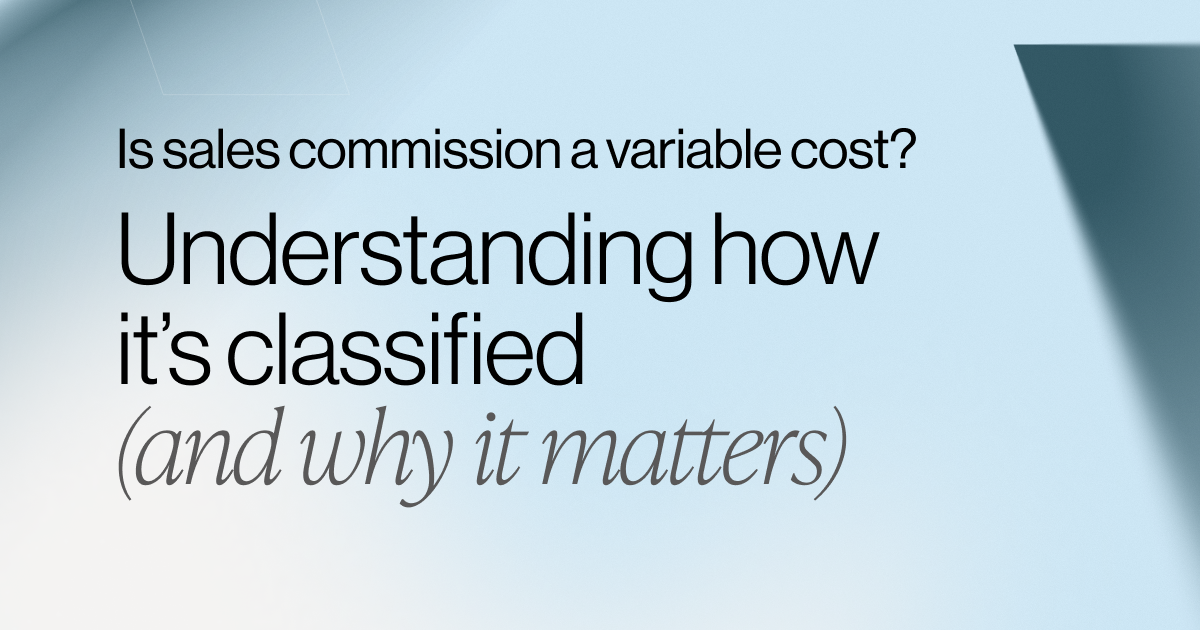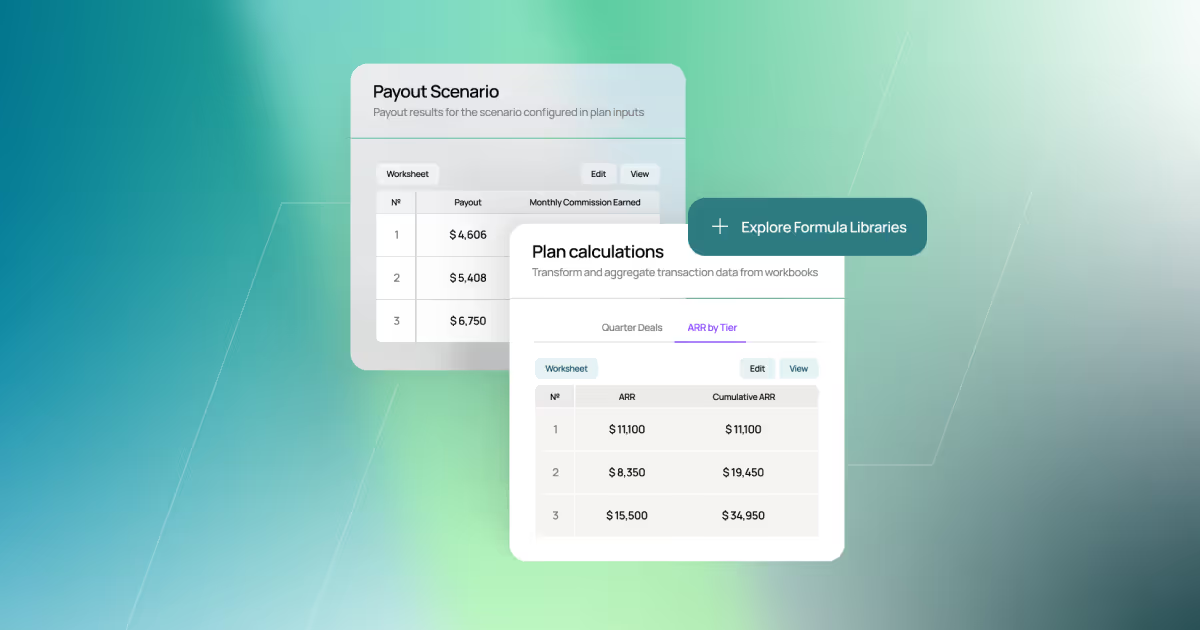The Modern CFO’s Guide to Optimizing Commission Management
For many finance leaders, offering an effective incentive compensation program without spending more than absolutely necessary is a delicate balancing act.
On the one hand, you want to motivate your GTM (Go-To-Market) teams to meet (or ideally, exceed) revenue goals. On the other, you don’t want to implement compensation plans that favor incentives over the bottom line. After all, incentive compensation is the largest sales expense for many organizations – and if left unchecked, it can end up detracting from profits instead of driving towards more revenue.
Ultimately, when it comes to commission management, your goal is to figure out how to best increase sales motivation, productivity, and results, while at the same time reducing excessive incentive spend. By following the four steps outlined below, today’s finance leaders can do just that:
Optimize the Overall CCoS (Compensation Cost of Sales)
Averaging roughly 40% of total sales costs, variable compensation is the largest sales expense for many businesses. But if the right incentives have been put in place to drive behaviors that benefit the bottom line, it also has the potential to be the expense with the highest ROI. The trick lies in identifying how to strike the right balance.
Decrease Compensation Program Costs
It's crucial that finance leaders understand how the organization’s incentive compensation strategy is impacting the bottom line, along with productivity costs that can divert attention from more strategic tasks. Fortunately, there are plenty of cost-optimization and time-savings opportunities to explore beyond improving your compensation cost of sales, including automating manual processes to reduce costly errors and bringing program maintenance in-house to lower your TCO (Total Cost of Ownership).
Ensure You’re Motivating Behaviors that Drive Revenue Results
By putting levers in place that incentivize the GTM behaviors your specific business wants to encourage (for instance focusing on selling services versus products, or prioritizing longer-term contracts), and providing ultimate visibility so reps clearly understand plan mechanics and payouts, you can set yourself up to efficiently motivate peak performance, boost productivity, and 10x revenue.
Get Robust Insights in Real-Time to Continuously Iterate, Improve, and Report on Success
An incentive compensation optimization solution that integrates and normalizes data across all of your organization’s disparate sources – sales pipeline, employee onboarding, and payroll, for instance – can provide quick and easy access to the reports you need to make decisions around how to optimize in real time.
For a more detailed look into each of the four steps outlined above – including actionable tips and tried-and-true strategies – be sure to download our full CFO checklist for optimizing your incentive compensation program.
.svg)


.png)





